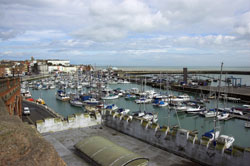Nikon 18-200 AF-S DX VR f/3.5-5.6 G
This lens is Nikon’s entry into the comparatively new group of superzooms designed exclusively for cropped sensor cameras and carries the DX coding to signify this. We take a look at their efforts, which is the first to carry a stabilising device.
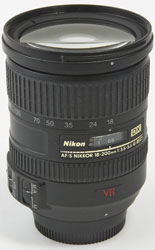 Specification
Specification
- Focal length 18-200mm (equiv: 27-300mm)
- Aperture f/3.5-5.6
- Construction 16/12 elements/groups (inc 2x ED)
- Filter size 72mm
- Closest focus 0.5m
- Focus Internal SWM
- Weight 0.56kg
- Dimensions 78.5x144mm
- Accessories Hood (HB-35) and soft case supplied
- Price £499.00
Build and handling
This lens is smaller than expected considering it is fitted with VR11 technology as well as a SWM focussing engine. The overall length increases by around 67mm when fully zoomed and this is achieved by a double trombone mechanism operated by the forward zoom ring. The rear manual focus ring is some 12mm wide, enough for a finger to adjust it with when needed. The silent wave motor that controls the autofocus means that this lens’s AF is both silent and quick and the MF ring does not turn during operation.
On the left of the lens sits the control panel sporting three slide switches. They control, from top to bottom, the AF/MF, VR on/off and VR mode (normal/active).
The Vibration Reduction system is the newer VR11 that Nikon claim is good for up to four stops of shutter speed reduction when hand holding and, although difficult to really measure, certainly seems to work. The active mode, employed for example while in a moving vehicle, certainly made the lens usable in those kind of conditions even on a bumpy road.
The focussing is carried out internally, resulting in a front element that does not rotate during use and making the use of filters a simple operation on the 72mm filter thread. The build quality, torque and general feel of the lens are up to Nikon’s usual, very nice standard.
Optical Quality
Zooms with a ratio in excess of 10x, and this one comes in at 11.1x, are normally a bit of a compromise when it comes to optical quality. This lens from Nikon is no different, with the need to close it down a stop or so to get the best results and performance at the wide end slightly better than at the longer focal length. What is pleasing about the lens is the contrast, which is good to excellent throughout the range. Another area that has been well controlled is that of Chromatic aberration, which, although it does exist, has been, evened out well enough for it not to show to any great extent at any point.
The coatings that Nikon use on their DX lenses do help to keep down instances of flare and ghosting and, I am sure, contribute to the good contrast achieved. Shining a directional high power torch into the lens produced no scary effects.
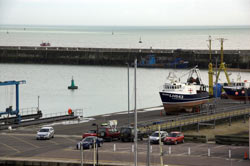 The versatility of the zoom range on this lens is impressive with the ability to open out or zoom in without changing lenses. This shot at 100mm with the VR engaged. |  The ability to pick out detail is very handy. Again hand held at 200mm with VR. |
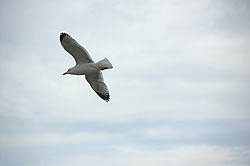 The Vibration reduction facility, at the Mk2 stage in this lens, does not require switching to enable panning, detecting it automatically. |
Click on each comparision photo below to view full size versions
Below is our lens test data. To find out how to use these graphs look at this article: How we test lenses
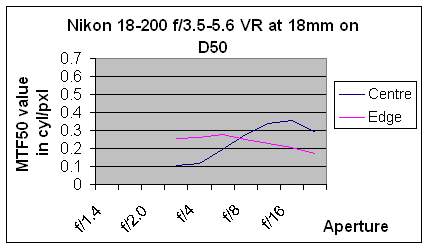
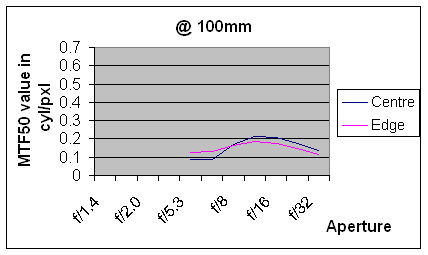
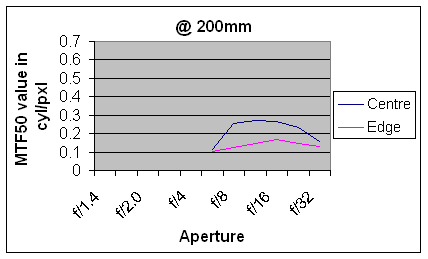
Verdict
As a general lens that covers a large focal range, this one produced nice results and the quick, silent autofocus along with the upgraded Vibration Reduction made it a joy to use. While not really up to producing big enlargements, it did well enough up to A4 from a desktop printer and the advantages of not having to constantly change lenses will be a boon for many. Supplied with both a dedicated lens hood and soft leatherette string-top bag the lens, with it’s upgraded advantages seems good value for money and will likely come down in price a tad more once the initial supply problems are overcome.
In summary, the positive points of the Nikon 18-200mm f/3.5-5.6 G ED VR are:
![]() Good VR system
Good VR system
![]() Fast focussing
Fast focussing
![]() Good to excellent contrast
Good to excellent contrast
The negative points are:
![]() Resolution not outstanding.
Resolution not outstanding.
![]() Bigger and heavier than the opposition (but not much for extra features)
Bigger and heavier than the opposition (but not much for extra features)
![]() Pricey and hard to source (at time of writing)
Pricey and hard to source (at time of writing)
Check the latest price of the Nikon AF-S VR 18-200mm f/3.5-5.6 G ED here
Test by Ian Andrews www.wildaboutkent.co.uk
It is an excellent lens, serving me as a single lens for long trips.
My dealer tells me they are all like this.The first one I had was very much less prone to creep. Can anyone help or advise?
mckenz, Oxford UK
When I got it, I took some seascapes to see how that would look. At wider focal lengths, I would compare the meeting of sea and air to the curvature you'd find on a stretched long bow.
However, with all that said, it is a very nice lens, which I find sharp with digital, and produces great contrast for such a zoom; such that knowing all this, I'd still buy it for the convenience of an 18-200 focal length.
I have decided to keep it on my new D-80 which I keep in the car, and to use other lenses with my D2X.
I just purchased one of the inexpensive lens supports from India which I found on eBay. It's basically a steel bar with an adjustible screw topped by a rubber cushion. I intend to try it with the next use of the lens to see if it would be of any use at all with the creep.
I had the D200 sensor cleaned by Nikon last week (still one very noticeable dark speck - am I too fussy?)
The technician (not reception person) told me he could tighten the 18-200 zoom but very strongly advised against!
Other helpful advice - on this camera and lens: only use VR when really needed.
Thanks for replies
mckenz
The lens was going to get damaged with the way it extended when being carried round in hand and was impossible to use on a tripod facing up or down.
Solution - a one centimeter slice of bicycle inner tube stretched diagonally across the inner join (keeping your focal distance clear. Calibrate it as stiff or as loose as you want. This really does complete the design, it's matt black, just the right tension and barely noticeable.
There are a lot of reviews comparing every feature of the lense. They are long, detailed, but more confusing than helpful. So I'll try to keep it short.
Let's say you a typical amature photographer. You take all kinds of pictures in all kinds of conditions. So what lense would be the best?
You can probably live with some minor distortions but nothing gives you as much freedom as a wide range zoom. If you shoot inside a room, you really need 18 m on a low end. The smaller the number the wider the angle and the more people you can squeeze into the frame from the other side of party table. Every mm here makes a big difference. So 18 mm on the low end is pretty much a must have. On the longer end, well, the bigger the better. However, if you that also means heavier and it also means much harder to take good pictures because on a long zoom range the camera gets less light, it's sensitive to shaking hands and the lense distortion is getting worse. Also it's more expensive.
More Detail : http://www.amazon.com/exec/obidos/ASIN/B002JCSV8A/tipfla-20
More Review : http://www.webcamerawebcamera.com/detail.php?id_detail=Nikon-18-200mm-f-3-5-5-6G-AF-S-ED-VR-II-Nikkor-Telephoto-Zoom-Lens-for-Nikon-DX-Format-Digital-SLR-Cameras&website=photodo
Add your message
Please login here or if you've not registered, you can register here. Registering is safe, quick and free.
photodo Stats
428 MTF tests
74 in-depth photodo reviews
100+ users join each day
Help the lens community by reviewing or rating a lens today via our lens search
Latest Lens Reviews
- Chinon 28mm f/2.8 Vintage Lens Review
- Canon EF 70-200mm f/4L IS II USM Lens Review
- Samyang AF 85mm f/1.4 EF Review
- Sigma 70mm f/2.8 DG Macro Art Review
- Samyang AF 24mm f/2.8 FE Review
- Meike 50mm f/1.7 Review
- Tamron 70-210mm f/4 Di VC USD Review
- Lensbaby Burnside 35mm f/2.8 Review
- Asahi Super Takumar 50mm f/1.4 Review
- Asahi Super-Multi-Coated Takumar 135mm f/3.5 Review
